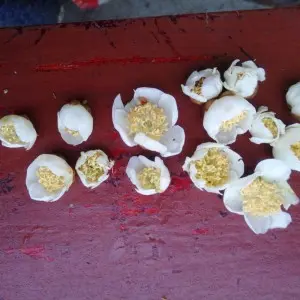ئىيۇل . 31, 2024 21:05 Back to list
Exploring the Importance of Pear Pollination and Its Impact on Agricultural Products and Ecosystems
The Role of Pear Pollination Products
Pollination is a crucial process that underpins the production of fruits and vegetables, with pear trees (Pyrus spp.) being significant contributors to global agriculture. The role of pear pollination products extends beyond mere fruit production; it encompasses ecological balance, economic viability, and the promotion of biodiversity.
The Importance of Pollination
Pear trees require cross-pollination to produce high-quality fruit. This means that pollen from one pear variety must fertilize the ovules of another. Various pollinators, particularly bees, play a vital role in facilitating this process. Honeybees, bumblebees, and solitary bees are common pollinators for pear trees, showing a remarkable affinity for these flowering plants. The presence of diverse pollinator species enhances pollination efficiency, leading to better fruit set and quality.
Economic Impact
The economic implications of effective pear pollination are significant. Pear production supports both local and global economies. In regions where pear cultivation is predominant, the fruits are not just a dietary staple but also a vital cash crop. Poor pollination can lead to decreased yields, impacting the livelihoods of farmers. Furthermore, successful pollination directly affects the commercial viability of pear varieties, influencing market demand and prices. Thus, ensuring robust pollination services is essential for sustaining this agricultural sector.
Biodiversity and Ecosystem Health
the role of pear pollination products

Pear pollination products, primarily facilitated by bees and other pollinators, contribute to biodiversity conservation. Healthy pear orchards provide habitats for various species, fostering a balanced ecosystem. In turn, a biodiverse environment promotes resilience against pests and diseases, reducing the need for chemical interventions. This ecological interdependence underscores the necessity of preserving pollinator populations, which face threats from habitat loss, pesticide use, and climate change.
Challenges and Solutions
Despite the essential role of pear pollination products, the decline in pollinator populations poses a significant challenge. Habitat destruction, agricultural practices, and environmental changes are leading to reduced bee numbers, which can jeopardize pear yields. To combat this issue, several strategies can be employed. Promoting organic farming practices, implementing integrated pest management, and creating pollinator-friendly habitats are effective measures. Additionally, raising awareness about the critical nature of pollinators encourages community involvement in conservation efforts.
The Future of Pear Pollination
As climate change continues to influence agricultural practices, the dynamics of pear pollination will also evolve. Research into climate-resilient pear varieties may yield solutions that can withstand changing conditions while still requiring healthy pollination. Furthermore, technological innovations, such as precision agriculture, can help optimize pollination strategies by using data analytics to monitor pollinator health and activity.
In conclusion, the role of pear pollination products is multifaceted, contributing to economic prosperity, environmental health, and biodiversity. The interdependence between pear trees and their pollinators highlights the necessity of protecting these valuable species to ensure sustainable agriculture. As we face global challenges in agriculture, strategic initiatives to support pollination will be paramount to securing food resources and promoting ecological balance. By prioritizing pollinator health, we can safeguard the future of pear cultivation and the ecosystems that rely on it.
-
Pollen Peach Tree for Pure Pollination and High-Quality Peach Pollen
NewsJul.30,2025
-
Premium Cherry Pollen for Pure Pollination & Different Types
NewsJul.30,2025
-
Artificial Pollination Solutions for Various Plant Pollen Types
NewsJul.29,2025
-
Artificial Pollination Solutions for All Plant Pollen Types
NewsJul.29,2025
-
Premium Plant Pollen for Pure Pollination & Pollen Block Solutions
NewsJul.29,2025
-
Artificial Pollination Solutions for Efficient Crop Yields
NewsJul.28,2025